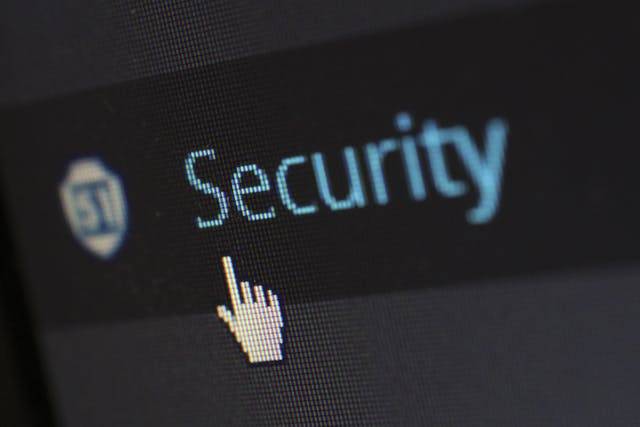Introduction: The Growing Importance of Cybersecurity
In the digital age, we’re more connected than ever before. While this connectivity has brought immense benefits, it has also opened the door to increasing threats to our data, privacy, and security. As we approach 2025, cybersecurity has become an even greater priority for individuals, businesses, and governments alike.
In this blog, we’ll explore the evolving landscape of cybersecurity, emerging threats, and what steps individuals and organizations can take to protect themselves in the years ahead.
1. The State of Cybersecurity Today: More Threats, Bigger Risks
Cybercrime is a growing global concern. Every year, we see more sophisticated cyberattacks, from phishing scams to ransomware, and even state-sponsored cyberattacks. These incidents cost businesses billions of dollars annually, disrupt operations, and cause irreparable damage to reputations.
-
Key threats: Ransomware attacks, data breaches, phishing, and social engineering.
-
Why it matters: The more data we store online, the more valuable that information becomes to cybercriminals. As we move into 2025, cybercriminals are using advanced AI and machine learning techniques to find new ways to infiltrate systems, making these threats more difficult to detect and prevent.
Example: The WannaCry ransomware attack in 2017 showed the devastating impact of cybersecurity vulnerabilities, affecting hundreds of thousands of computers worldwide and costing billions of dollars in damage.
2. The Role of Artificial Intelligence in Cybersecurity: A Double-Edged Sword
Artificial Intelligence (AI) is playing a dual role in the cybersecurity landscape. On one hand, AI can help identify threats faster and more efficiently than human analysts ever could, using machine learning to detect unusual patterns and prevent potential attacks. On the other hand, cybercriminals are increasingly using AI to create more sophisticated attacks.
-
Key features: Automated threat detection, predictive analytics, and AI-driven attack simulations.
-
Why it matters: AI-powered security systems can rapidly analyze vast amounts of data and detect threats in real-time, preventing cyberattacks before they cause significant damage. However, hackers are also leveraging AI to create more convincing phishing scams, automate brute force attacks, and even mimic human behavior to bypass security measures.
Example: Companies like Darktrace are using AI to detect cybersecurity breaches by analyzing network traffic and recognizing unusual patterns of activity that could indicate a potential attack.
3. The Rise of Ransomware and How to Defend Against It
Ransomware has become one of the most devastating and profitable forms of cybercrime. In a ransomware attack, hackers lock you out of your own system or data, then demand a ransom in exchange for the decryption key. These attacks are particularly problematic for businesses, as they can lead to extensive downtime, loss of data, and financial harm.
-
Key features: Encrypted files, ransom demands, and data loss.
-
Why it matters: Ransomware is constantly evolving, with hackers finding new ways to target both individuals and large organizations. The cost of a successful attack can range from thousands to millions of dollars, especially if the business doesn’t have effective backups in place.
Example: In 2020, the Maze ransomware group made headlines after stealing sensitive data from major corporations and demanding millions of dollars in exchange for not releasing the data to the public. This new double extortion tactic—stealing data and demanding a ransom for both access and confidentiality—has become more common.
Defense Tip: Regularly back up your data and ensure you have a strong network security system in place. Employee training is also key to avoiding phishing attempts that often lead to ransomware infections.
4. The Growing Threat of IoT Devices in Cybersecurity
As more IoT devices become part of our daily lives—from smart thermostats and voice assistants to connected cameras and wearables—the potential attack surface for hackers increases. These devices are often poorly secured, making them easy targets for cybercriminals looking to gain access to home networks or even launch large-scale attacks.
-
Key features: Vulnerabilities in IoT devices, weak default passwords, and insecure connections.
-
Why it matters: Many IoT devices are constantly connected to the internet, providing hackers with potential entry points into more sensitive networks. These devices can also be used to create botnets for massive-scale distributed denial-of-service (DDoS) attacks.
Example: The Mirai botnet attack in 2016 used compromised IoT devices like cameras and routers to take down large websites, including Twitter, Netflix, and Spotify. As more devices come online, the risk grows.
Defense Tip: Ensure all IoT devices are protected by strong passwords, updated firmware, and a secure home network. Consider using a separate network for your smart devices to isolate them from critical systems.
5. How Companies Can Strengthen Their Cyber Defenses
For businesses, a strong cybersecurity strategy is essential in today’s threat landscape. Cyberattacks not only result in financial loss but can also harm a company’s reputation, customer trust, and long-term viability.
-
Key features: Multi-factor authentication, employee training, and threat monitoring.
-
Why it matters: A proactive approach to cybersecurity is vital. Companies need to invest in advanced threat detection systems, regularly train employees on cybersecurity best practices, and ensure that data is encrypted and backed up.
Example: Companies like Microsoft and Google employ cutting-edge security measures, including zero-trust architectures and multi-factor authentication, to protect sensitive data and prevent unauthorized access.
Defense Tip: Focus on implementing a layered defense system. Use firewalls, intrusion detection systems, anti-malware software, and encryption to create a robust security framework.
6. The Future of Cybersecurity: What to Expect in 2025
As we look ahead to 2025, it’s clear that cybersecurity will continue to be a top priority for individuals, businesses, and governments. Emerging technologies like quantum computing, AI, and blockchain are poised to redefine the cybersecurity landscape, offering new ways to protect against attacks while also creating new challenges.
-
Key features: Quantum-resistant encryption, AI-driven security, and blockchain-based security.
-
Why it matters: As the digital world evolves, so do the tactics of cybercriminals. The next generation of cybersecurity technologies will need to stay one step ahead of increasingly sophisticated attacks.
Example: Quantum encryption is expected to offer new levels of security by using the principles of quantum mechanics to encrypt data in ways that are nearly impossible to crack, even for the most powerful computers.
Defense Tip: Stay informed about new cybersecurity trends and best practices. Regularly update your security measures, and make cybersecurity a company-wide priority to minimize risk.
Conclusion: Staying Safe in an Increasingly Digital World
As we move into 2025 and beyond, the importance of cybersecurity can’t be overstated. With cyber threats becoming more sophisticated and pervasive, individuals and businesses must take proactive measures to protect their data and digital assets.
By staying vigilant, educating employees, and investing in the latest security technologies, we can build a safer, more resilient digital world.





